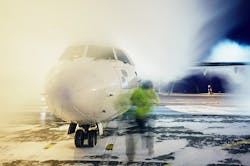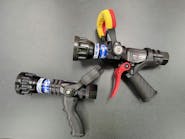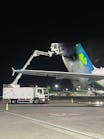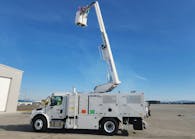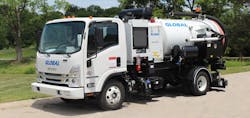Aviation Winter Preparation and Stocking Up for Cold Weather
In most places, winter is going to bring disruptions and difficulties of one kind or another to an airport. In warmer climates, that can mean the increased risk of cloudbursts, electrical storms, and obscuring fog. For the colder regions, however, winter delivers an entire suite of challenges that can make everyone’s work all the more difficult. This is especially true with airside ground crews. They are dealing with all of the visibility and mobility issues of flight crews and air traffic control, on top of which they are moving baggage, piloting service carts, and driving aircraft tugs out in the elements all day. This makes planning, preparing and stocking up for the winter particularly critical for smooth service airside.
Winterizing GSE and Preparing the Ground Crew
Winterizing the airside ground support equipment (GSE) and ground crew requires more than outfitting the aircraft tug and baggage tractor with snow tires. It requires preparing the GSE and crew for the reality of work in the winter. That starts with examining the GSE that’s been set aside since the year before to be sure it’s in working order. The mechanics should check deicing vehicles, sprayers, platforms and anything else necessary for winter use to ensure safety and functionality. It’s also a good time to consider purchasing or renting more GSE to add to airside operations.
Additionally, since winter conditions can increase the risk of accidents and emergencies, make a point of establishing, emphasizing and testing communication networks. That includes communication between crews: between flight crews and ground crews, between airside ground crews and airport management, and so on. Finally, train and prepare crew members on the realities of winter crew work, including emergency and protocols and communication best practices.
The Appropriate Deicing GSE
Once the deicing GSE has been inspected, topped off, cleaned up, updated and repaired, if necessary, determine whether it will prove sufficient to meet the crew’s needs in the winter. Beyond guaranteeing that the towable, heated deicer tank and deicing truck are good to go, consider if the appropriate gear is available. Sometimes crew members find that a portable four-gallon backpack-style anti-ice/deice sprayer unit is a far more convenient, hassle-reducing solution for servicing smaller planes than hooking up the deicer tank and maneuvering it over. Additionally, that convenient backpack sprayer isn’t going to be of much use if it’s only rated for Type I deicing fluid and there’s only Type IV on hand. Unlike typical backpack sprayers, AERO sells a portable deicer for Type IV fluid that works great for small planes.
Additional Deicing GSE
That being said, an essential piece of deicing GSE every crew needs on hand—besides the vehicles, sprayers and platforms—is deicing fluid. At the very least, it makes sense to have both Type I and Type IV fluid available for different applications.
Additionally important GSE is a selection of headsets and intercom systems. When a crew member is required to be out in particularly bitter winter weather spraying an aircraft down with deicing fluid, having a high-quality, working intercom in a weather-tight dual-ear headset can prove incredibly valuable.
